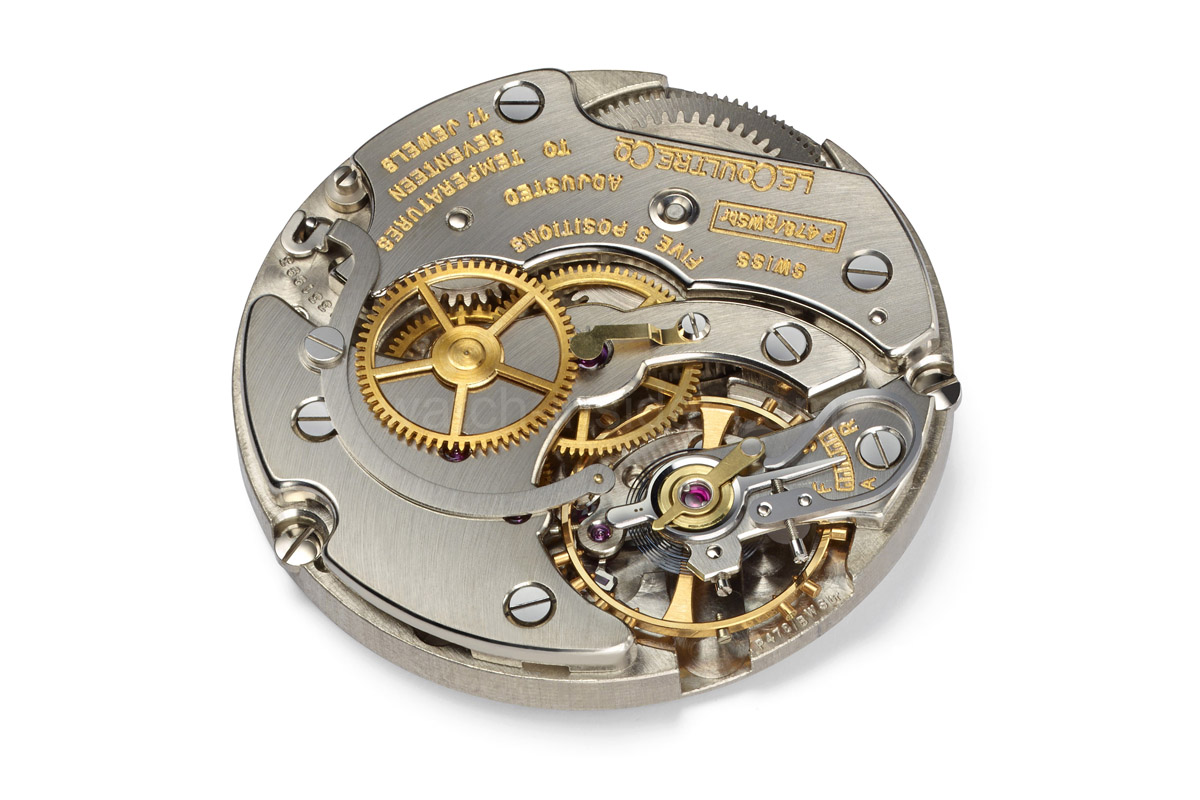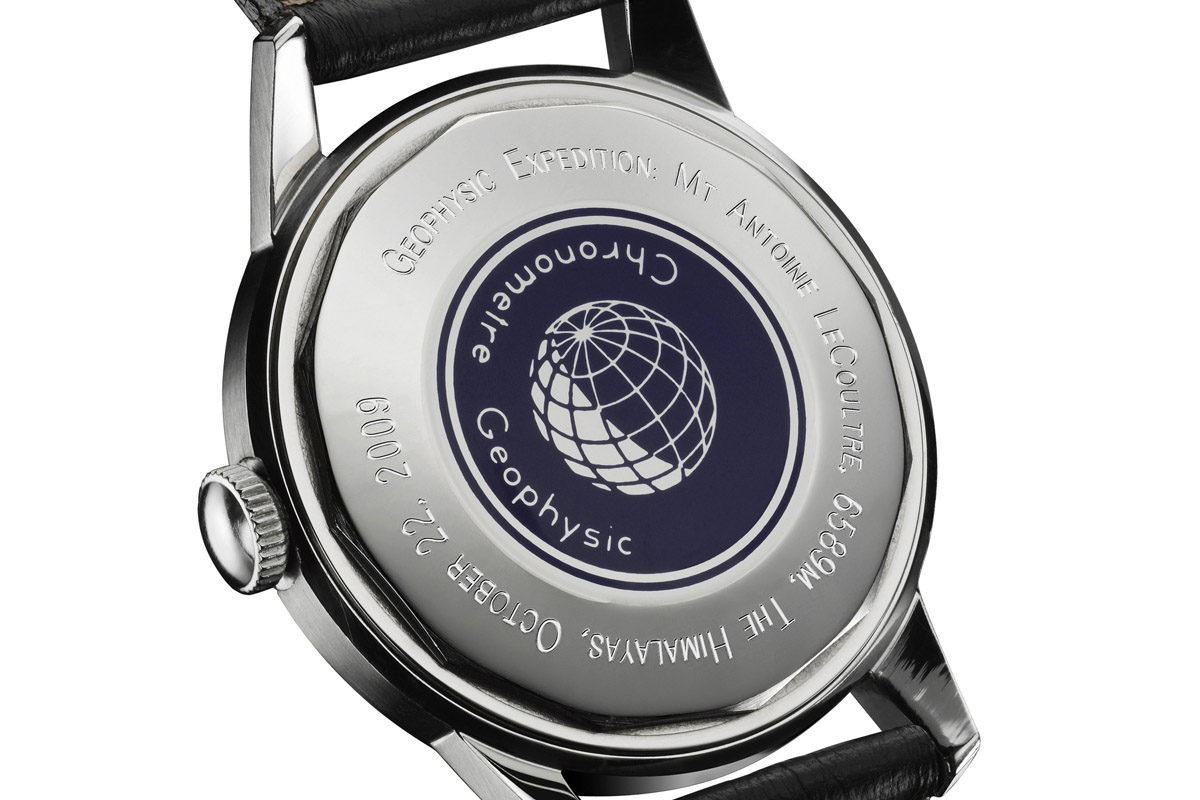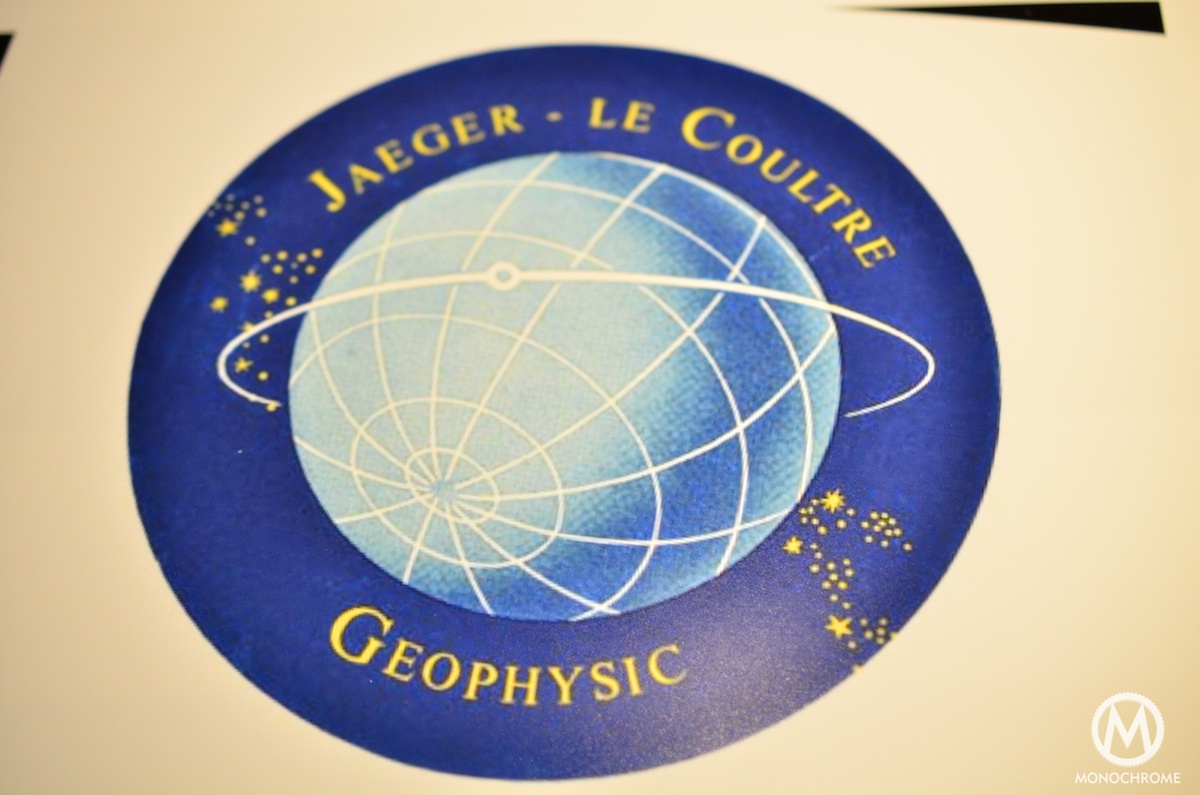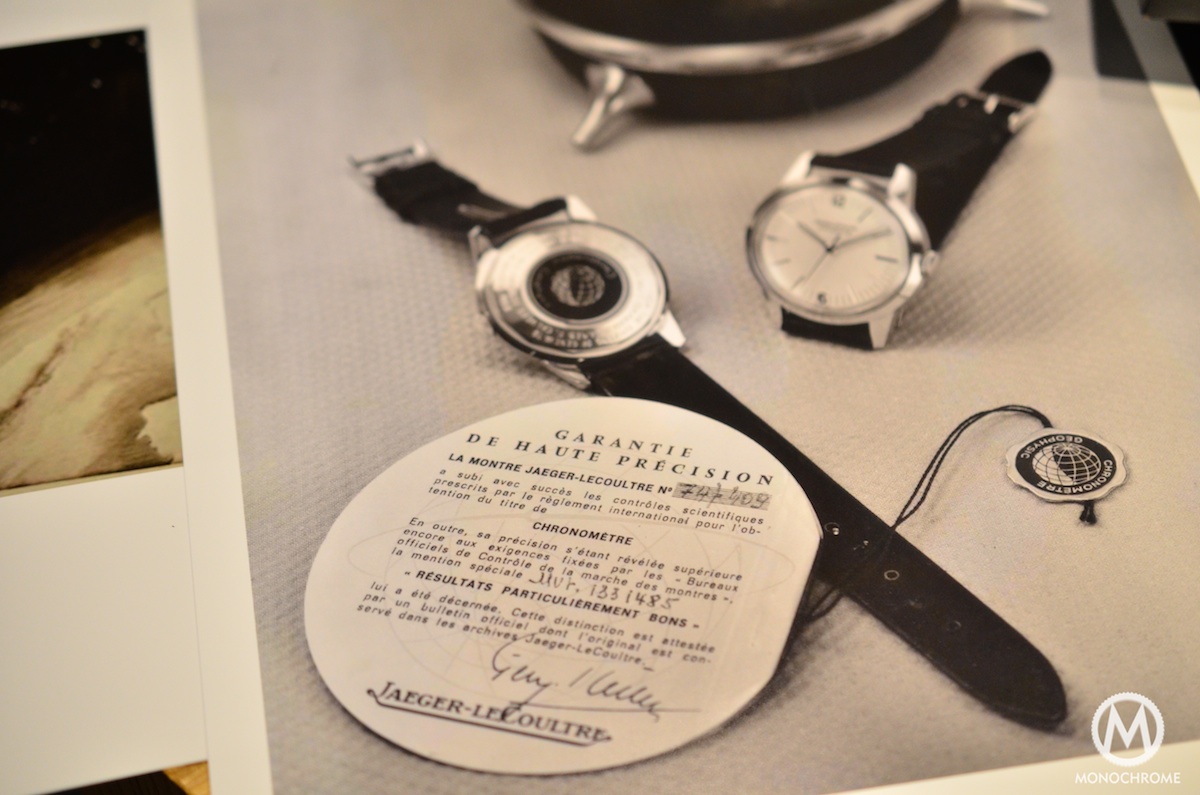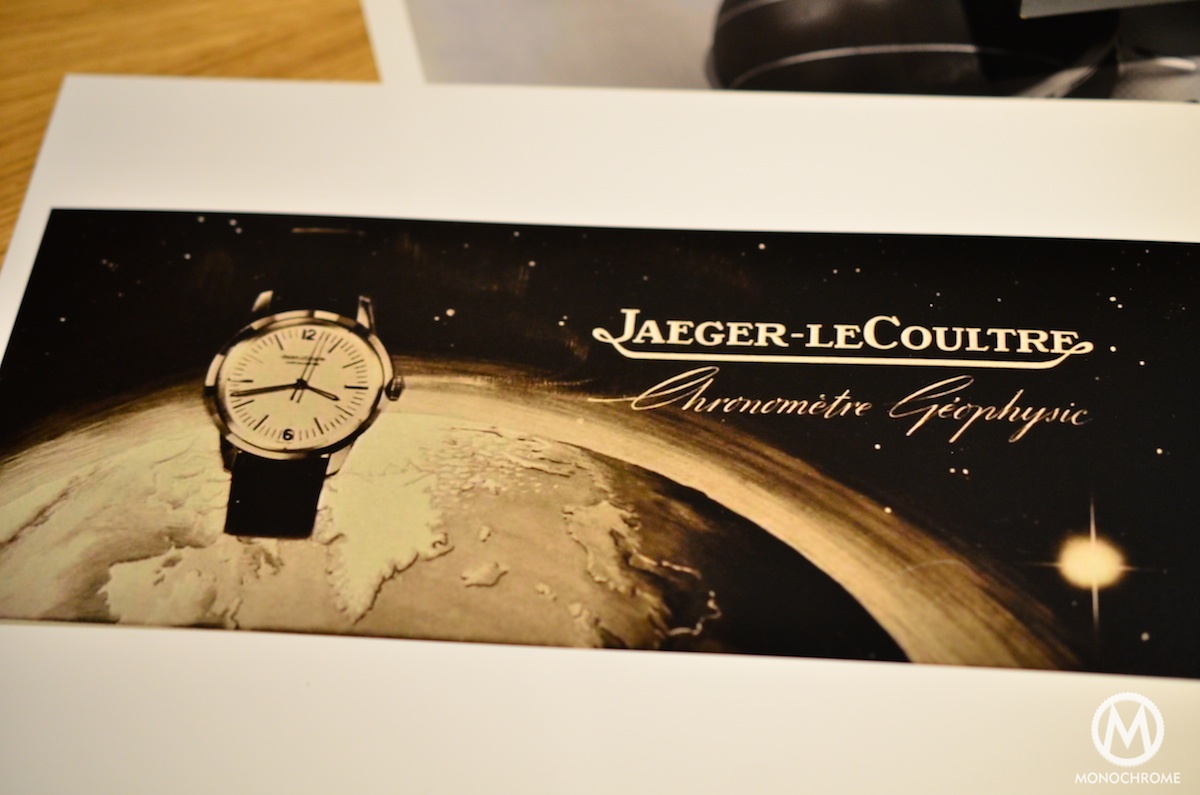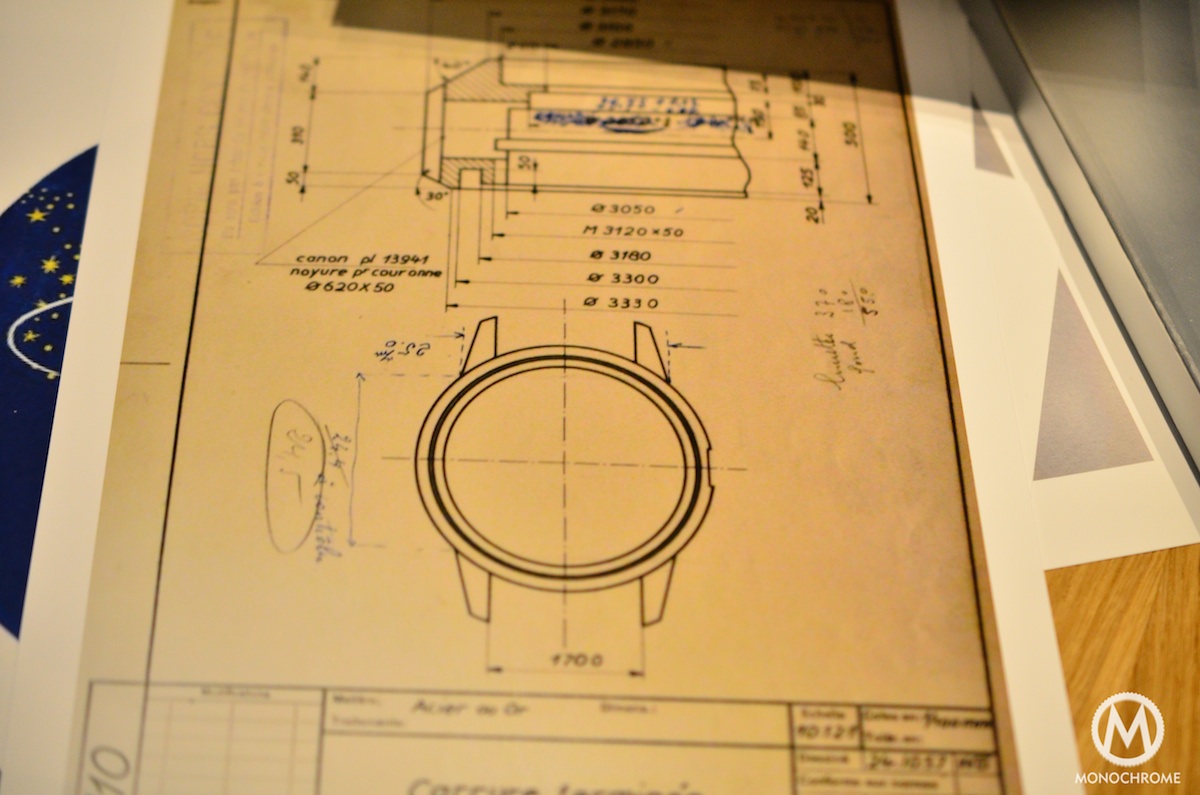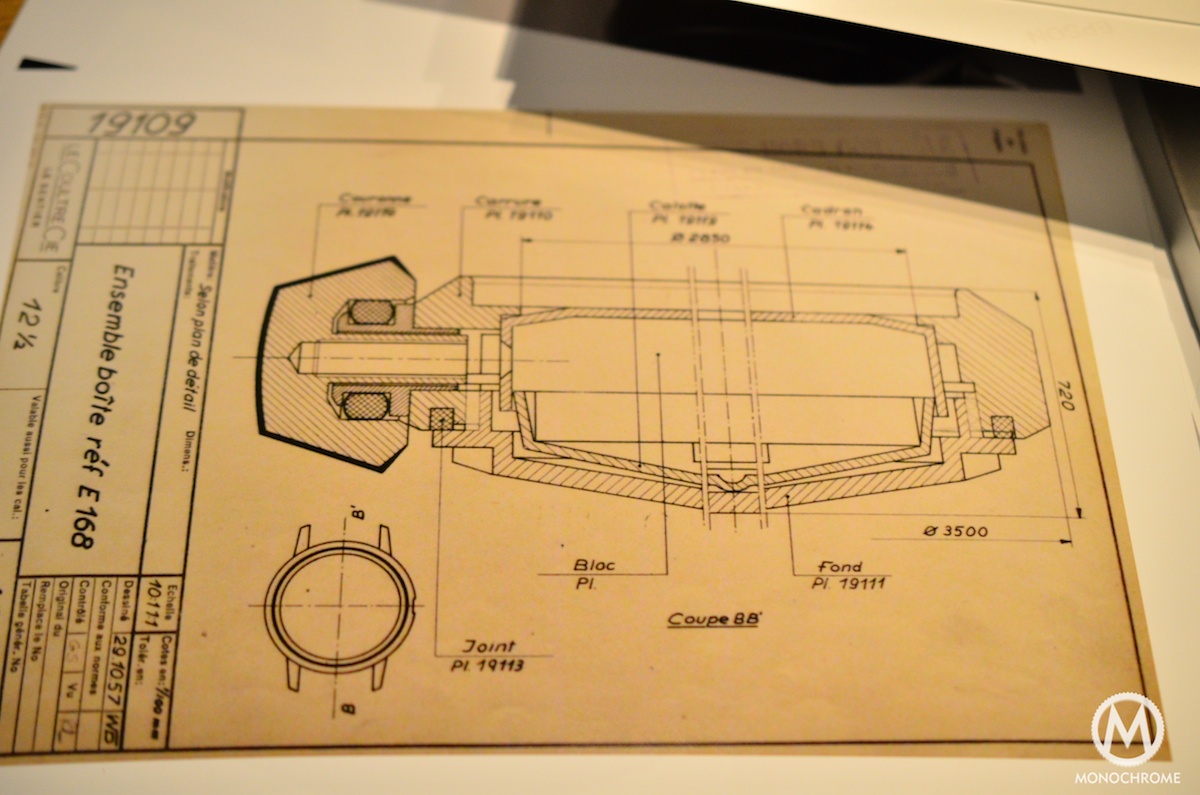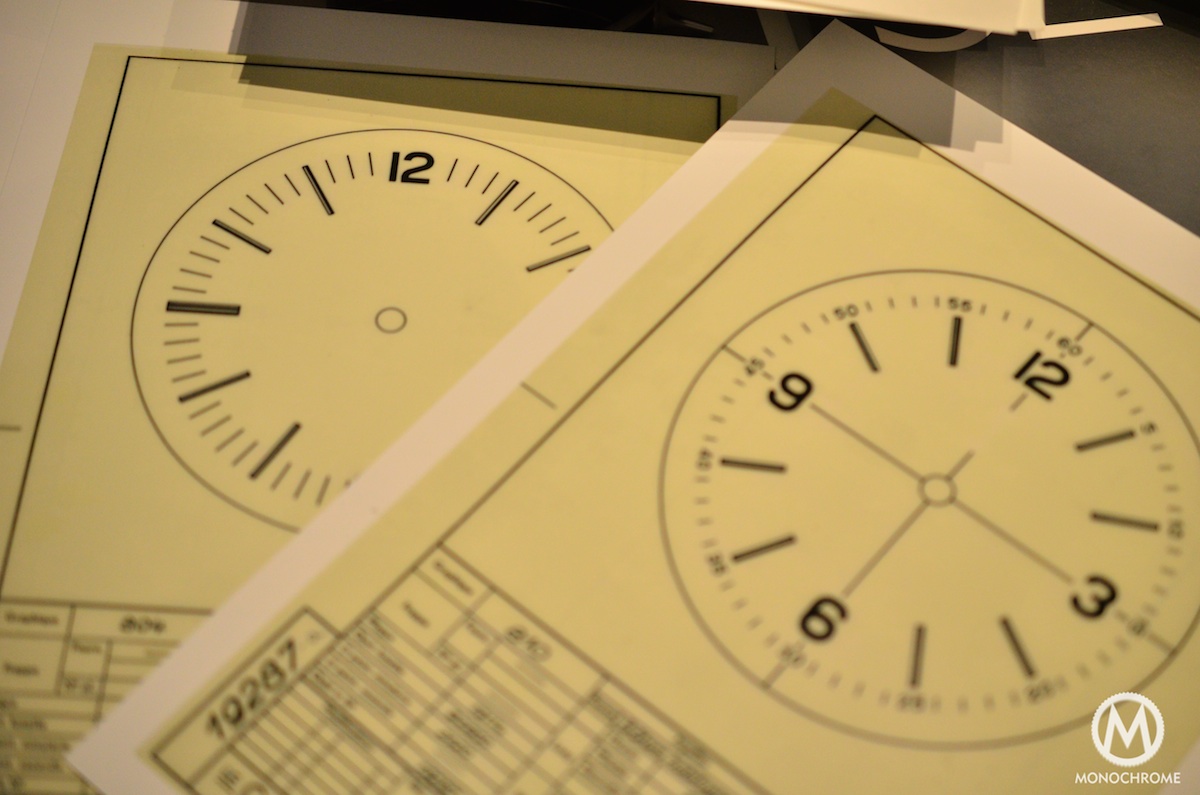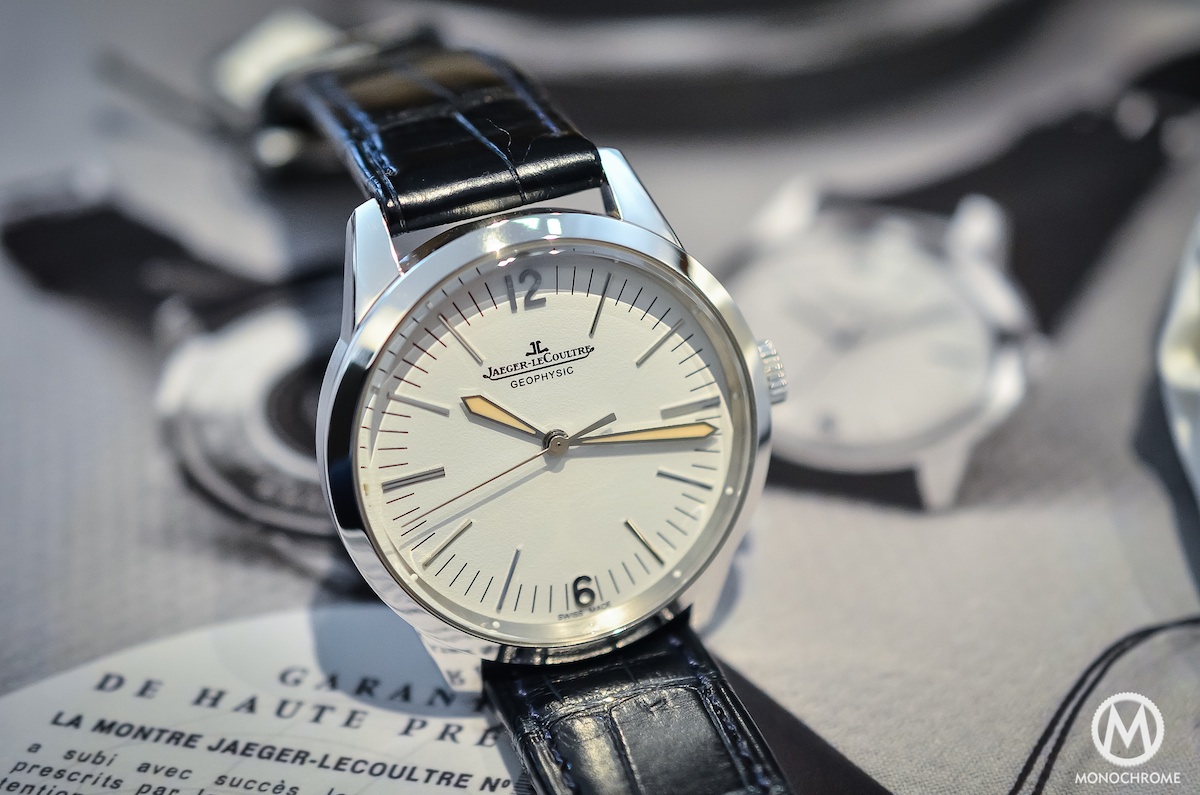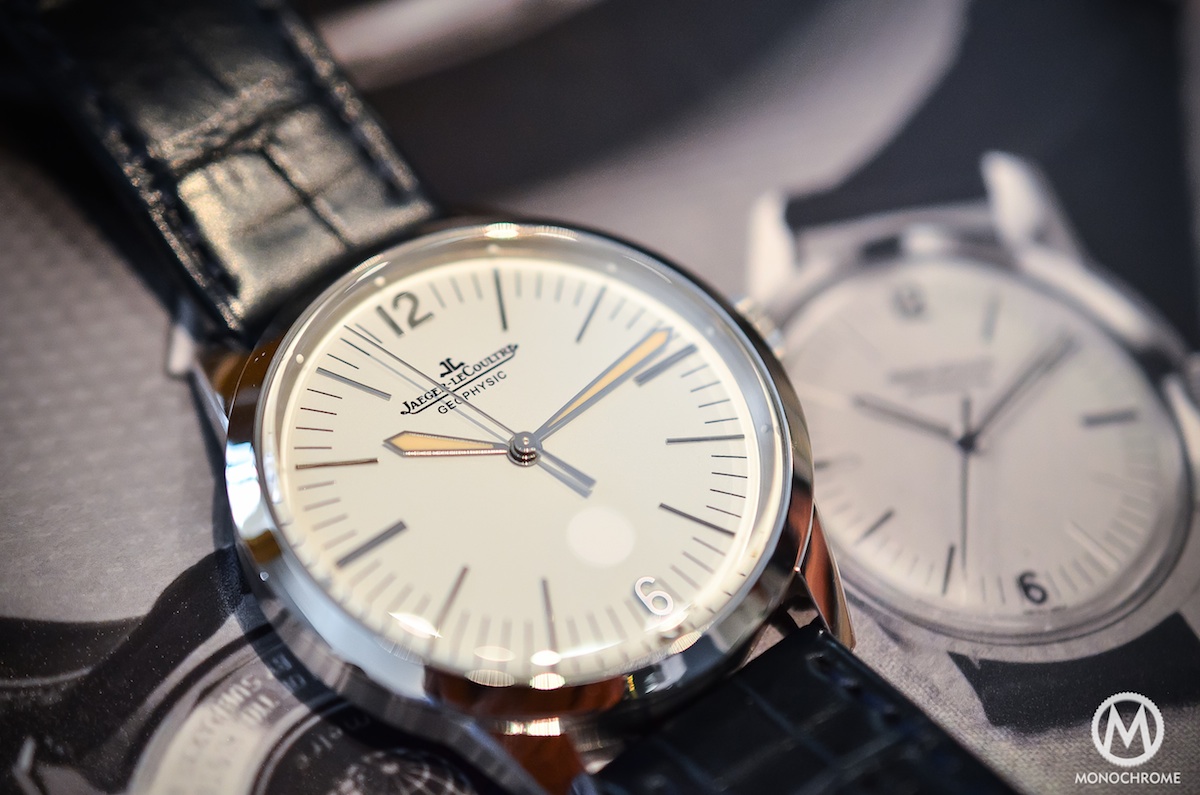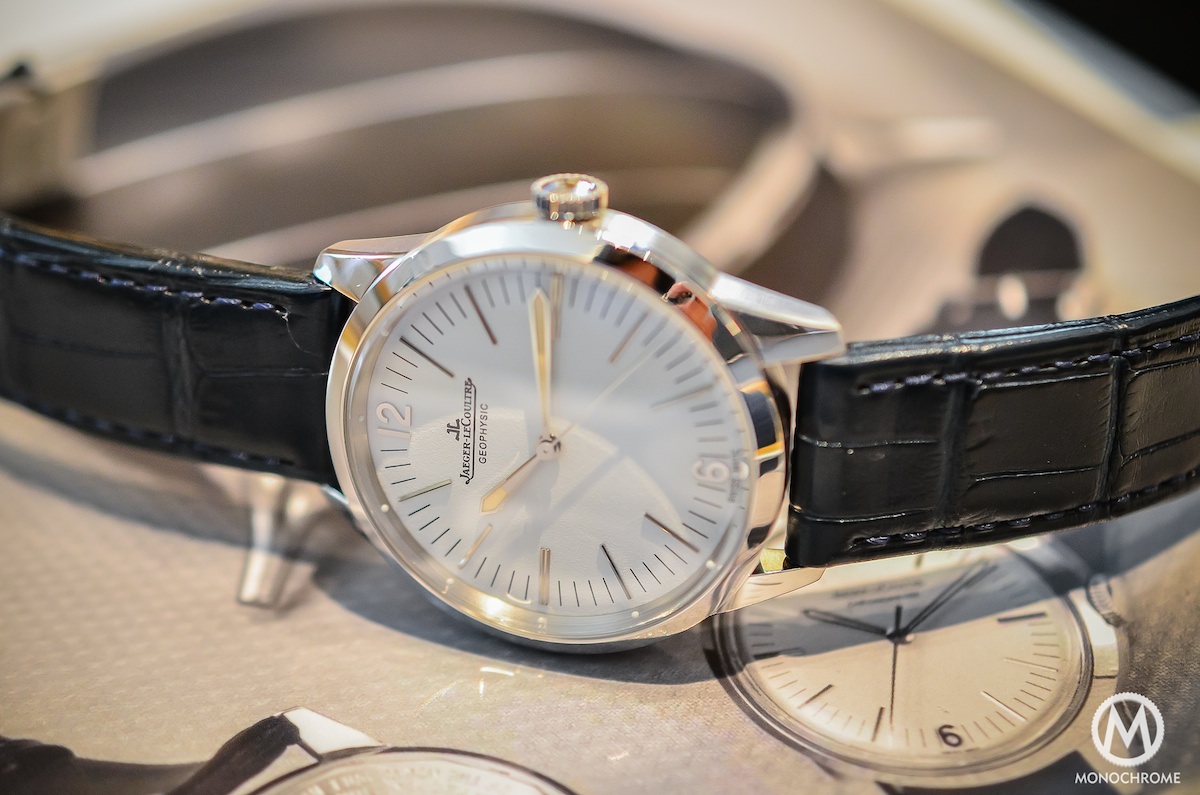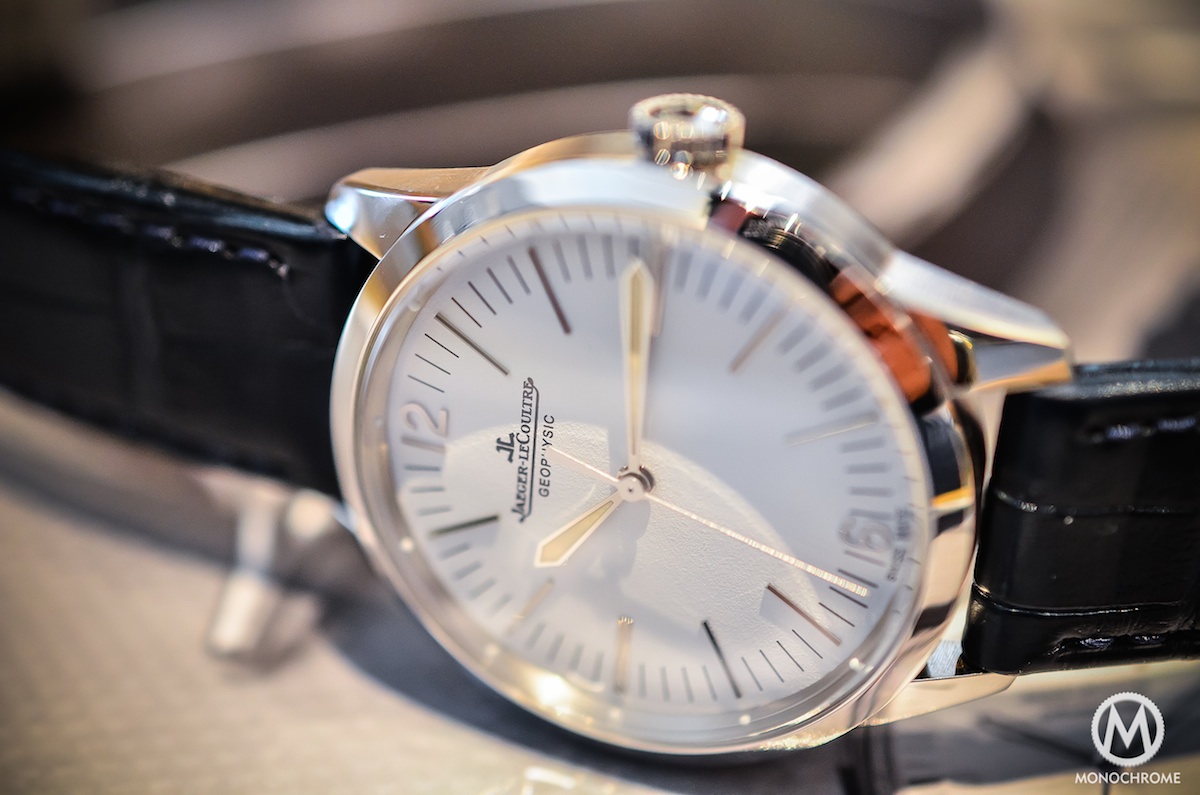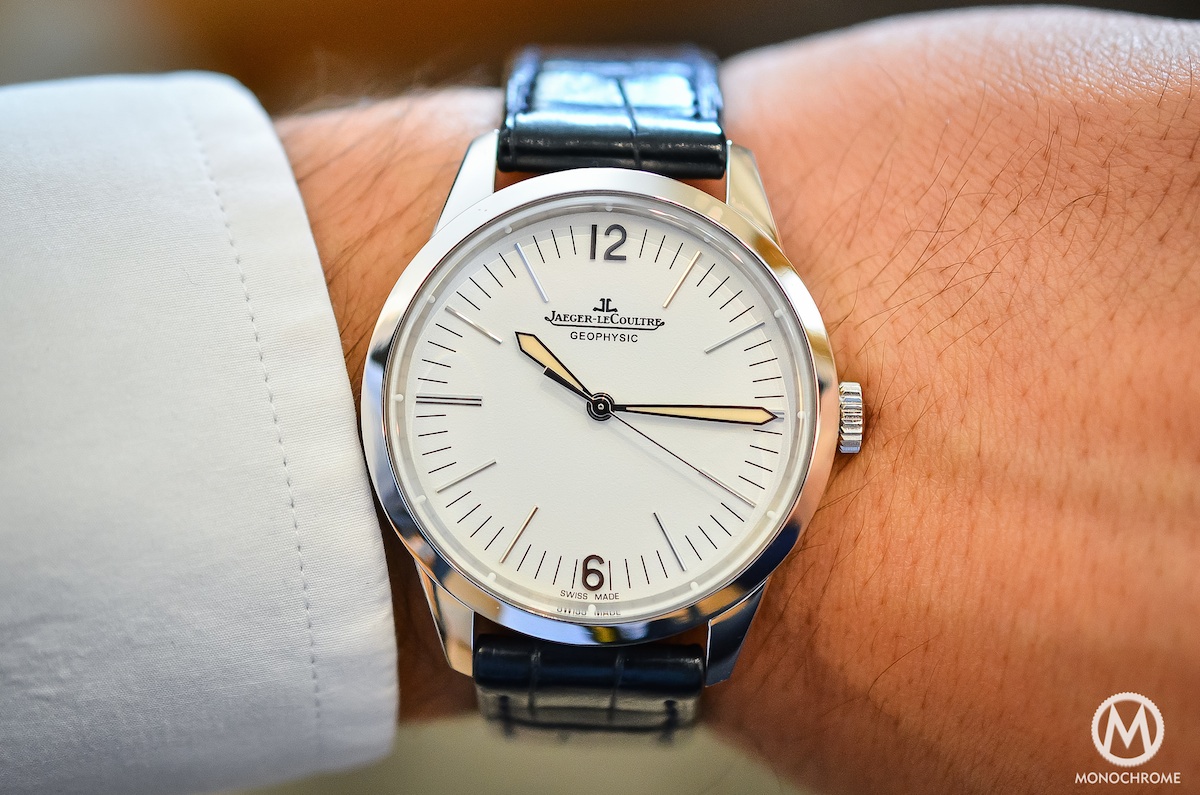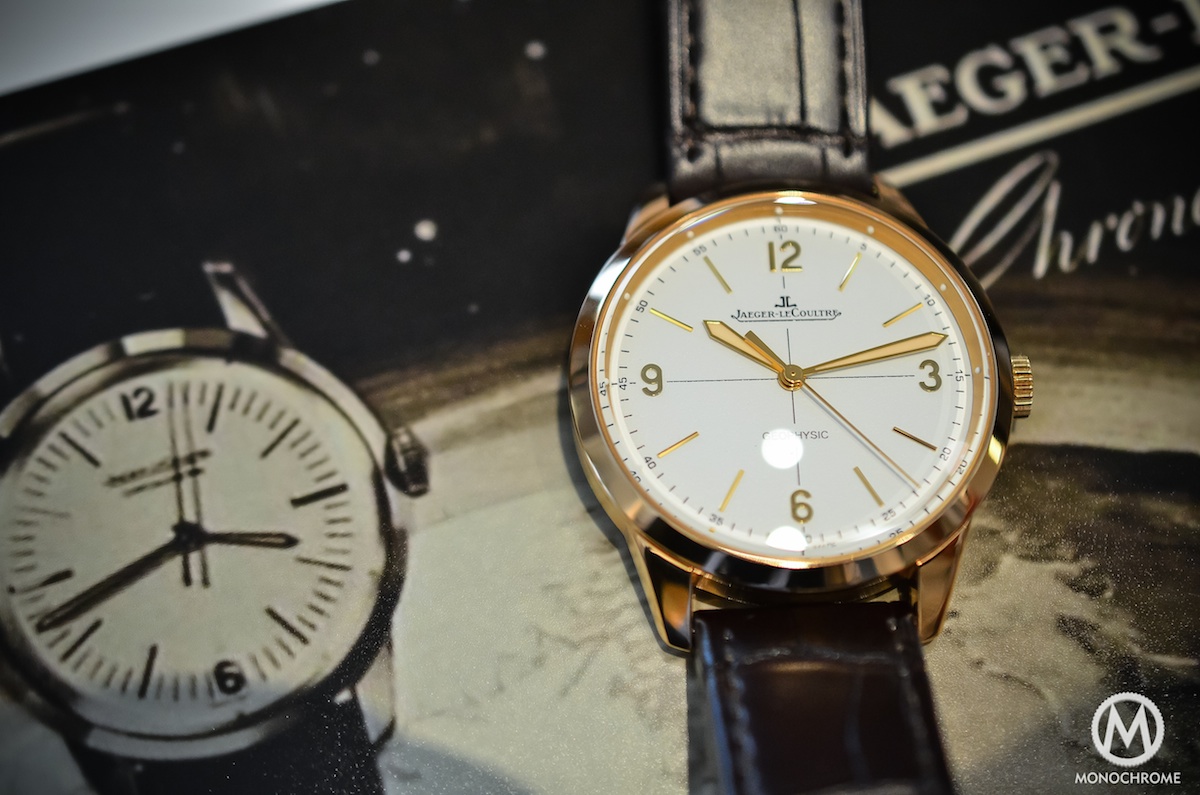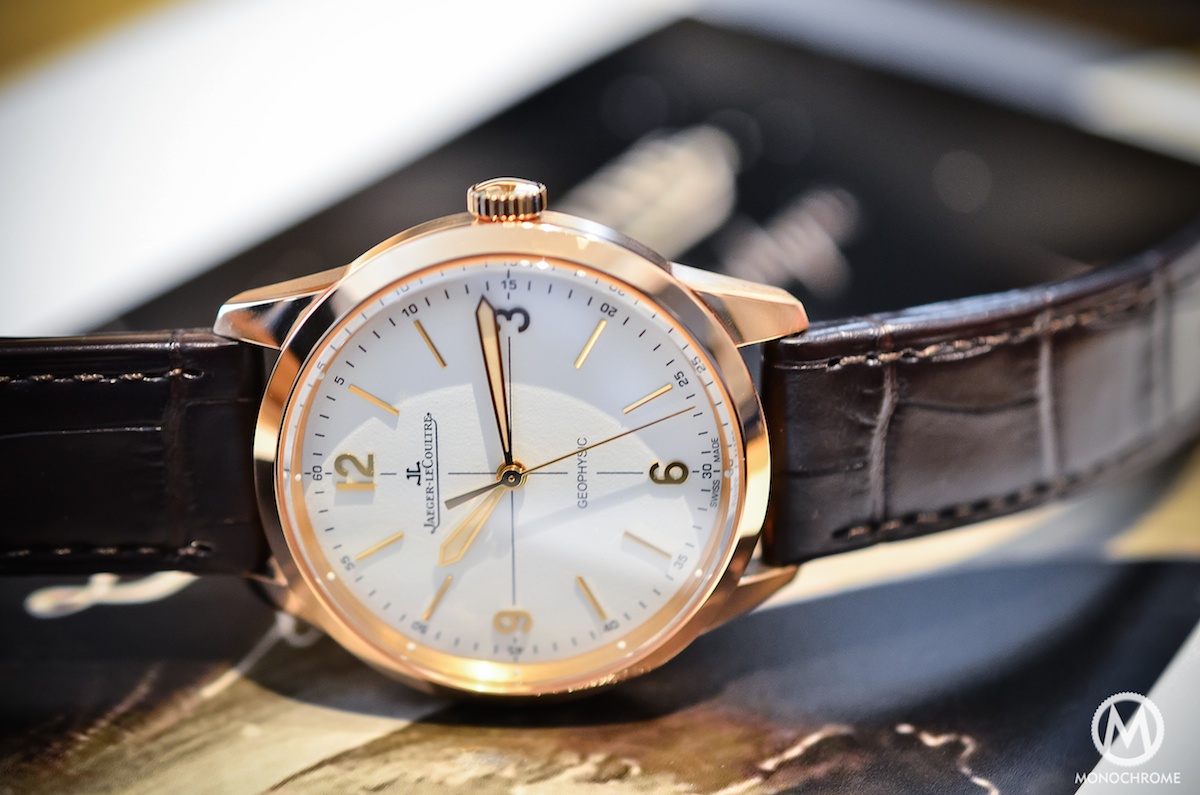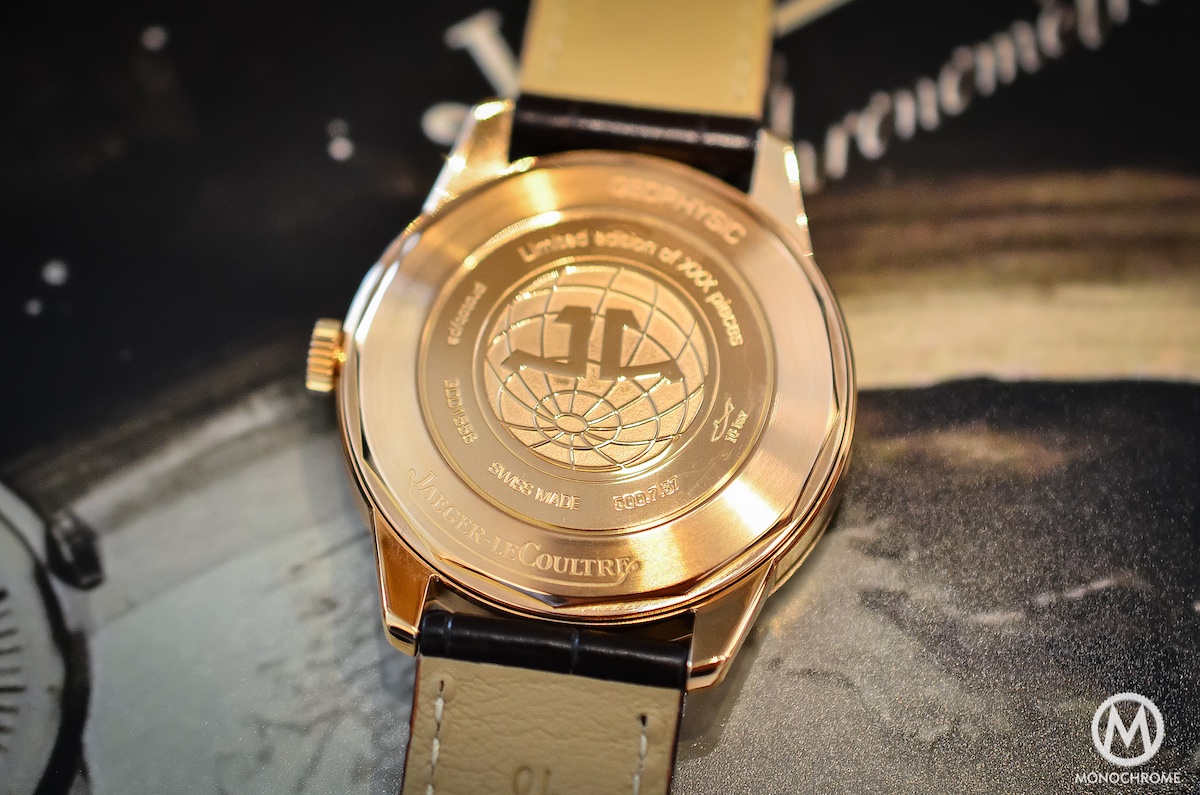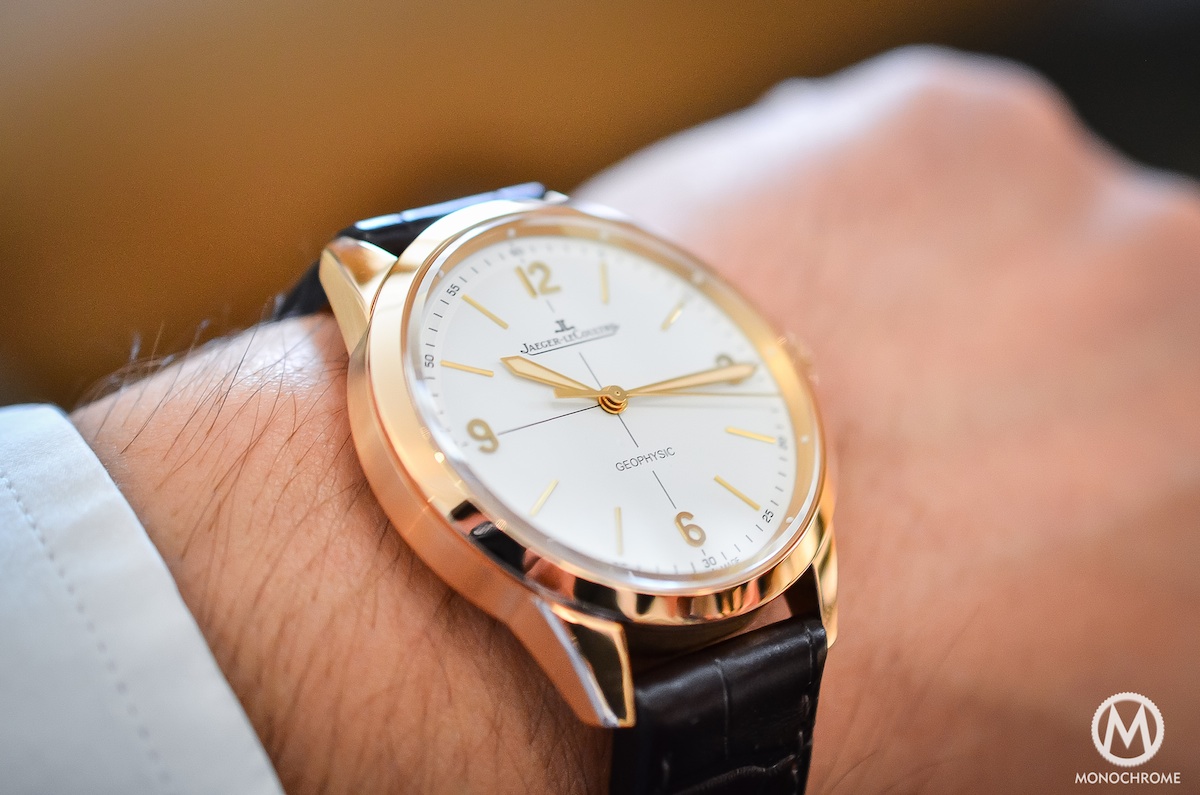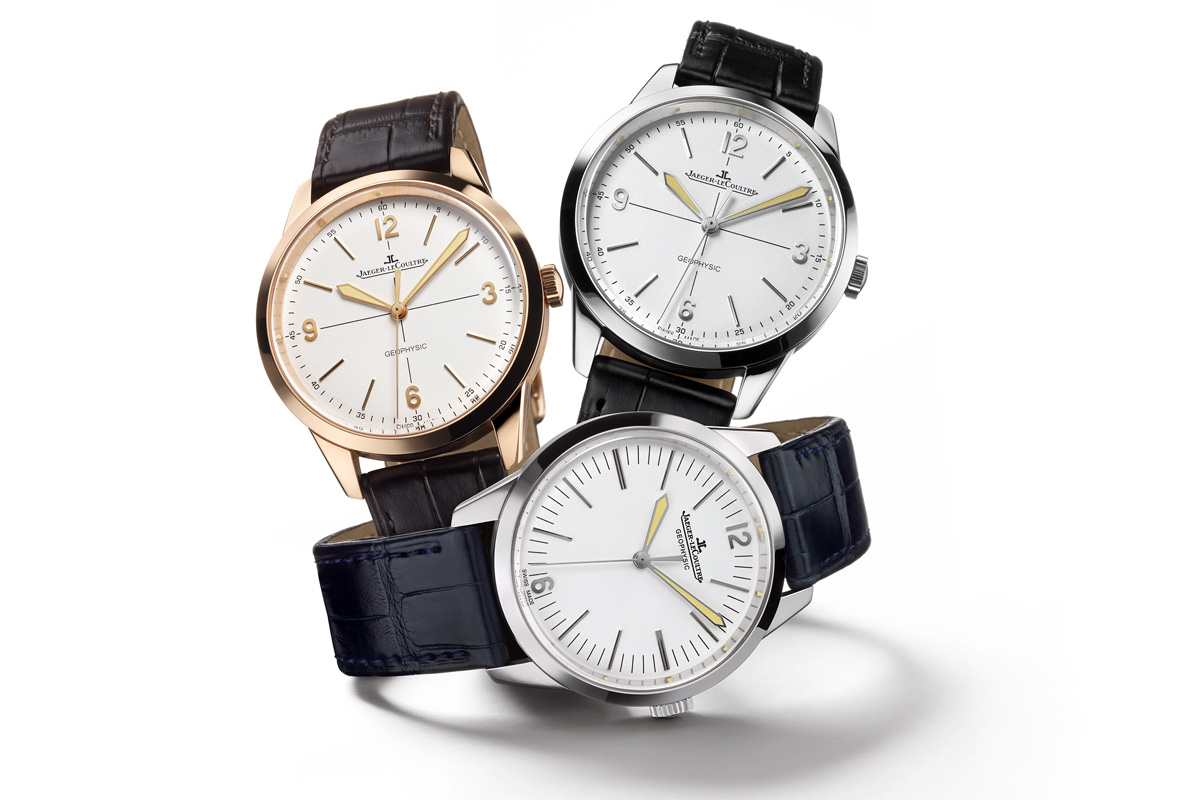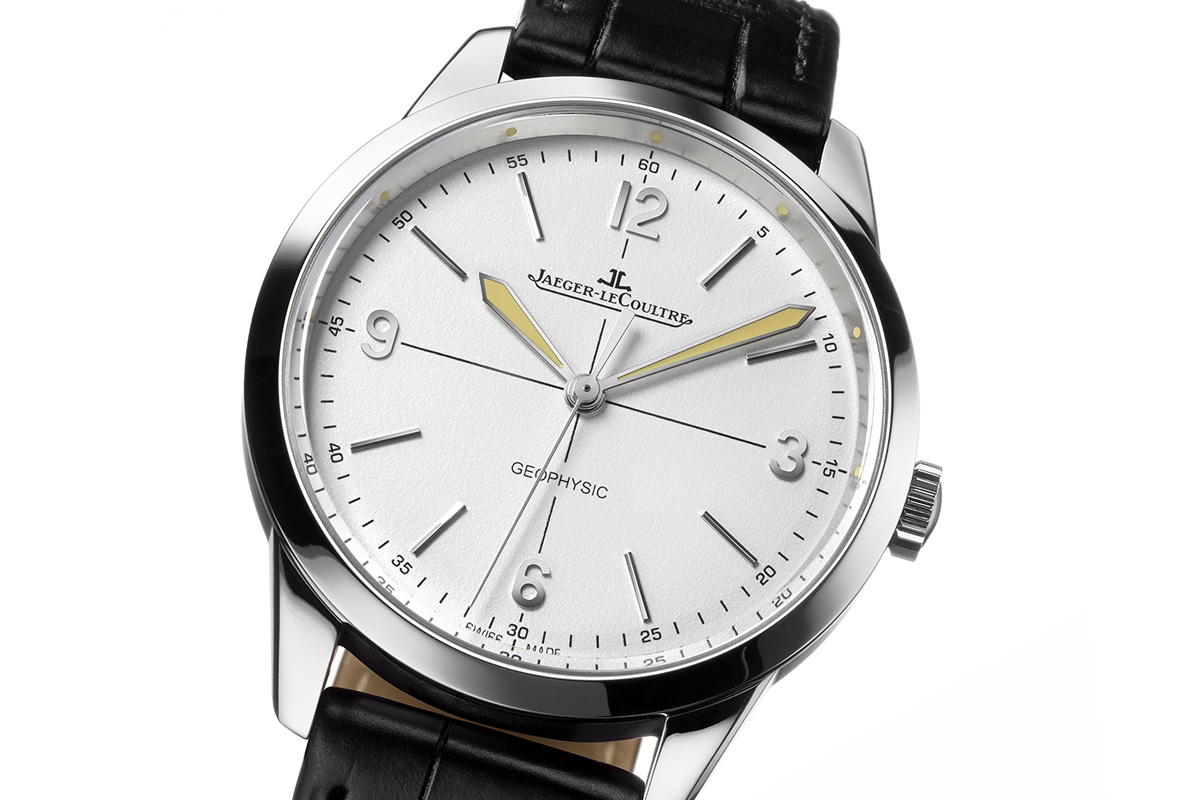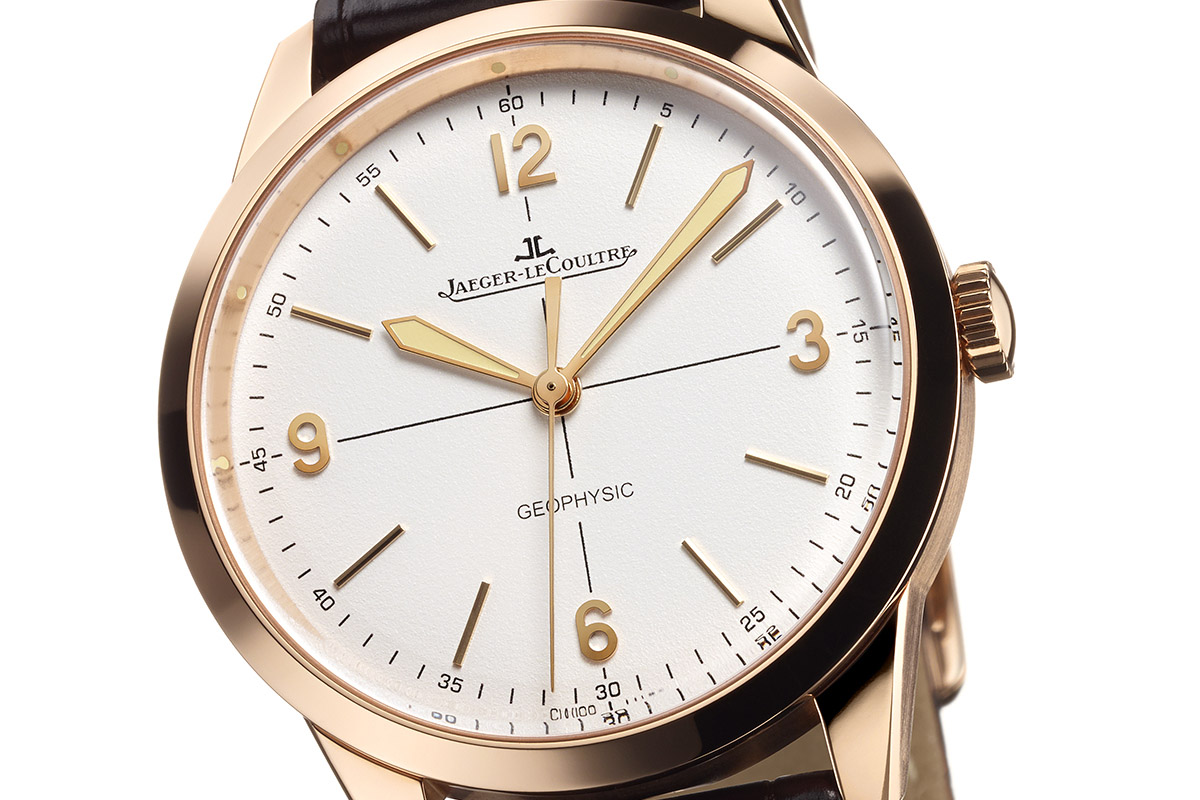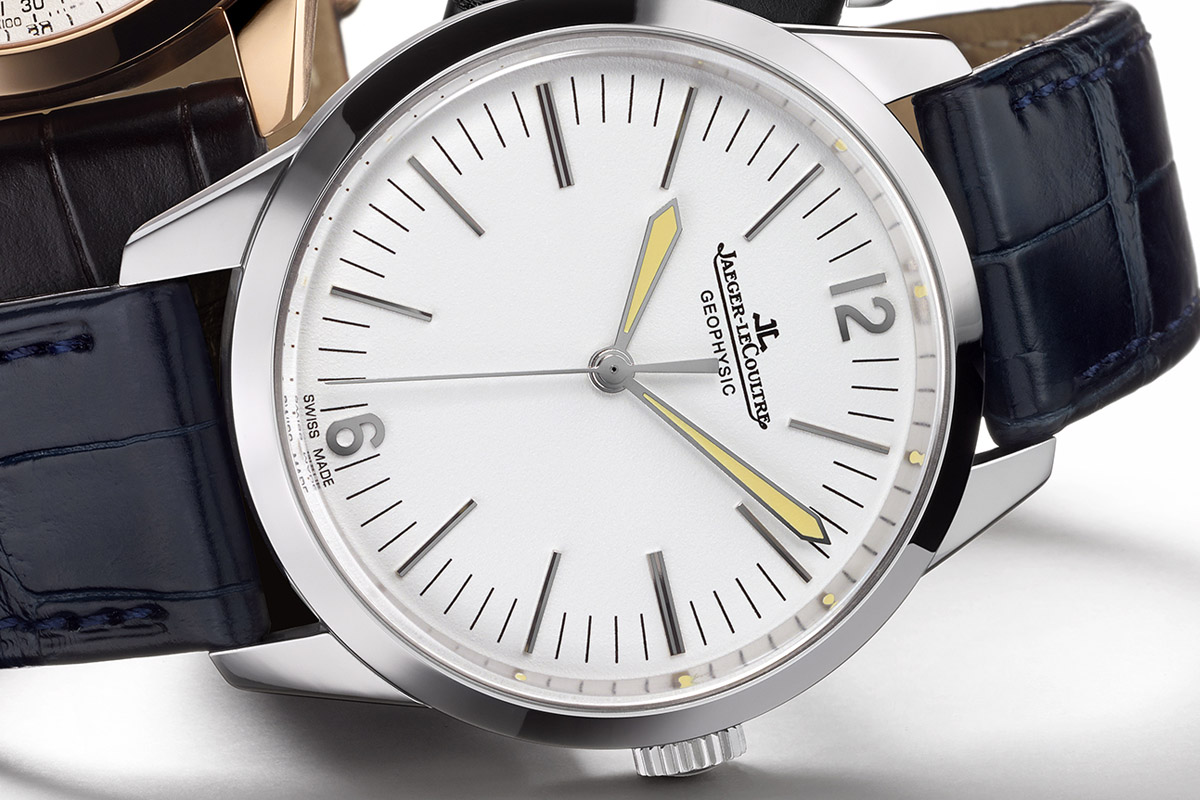Jaeger-LeCoultre Geophysic 1958 – Hands-on with (tons of) live photos, specs and price
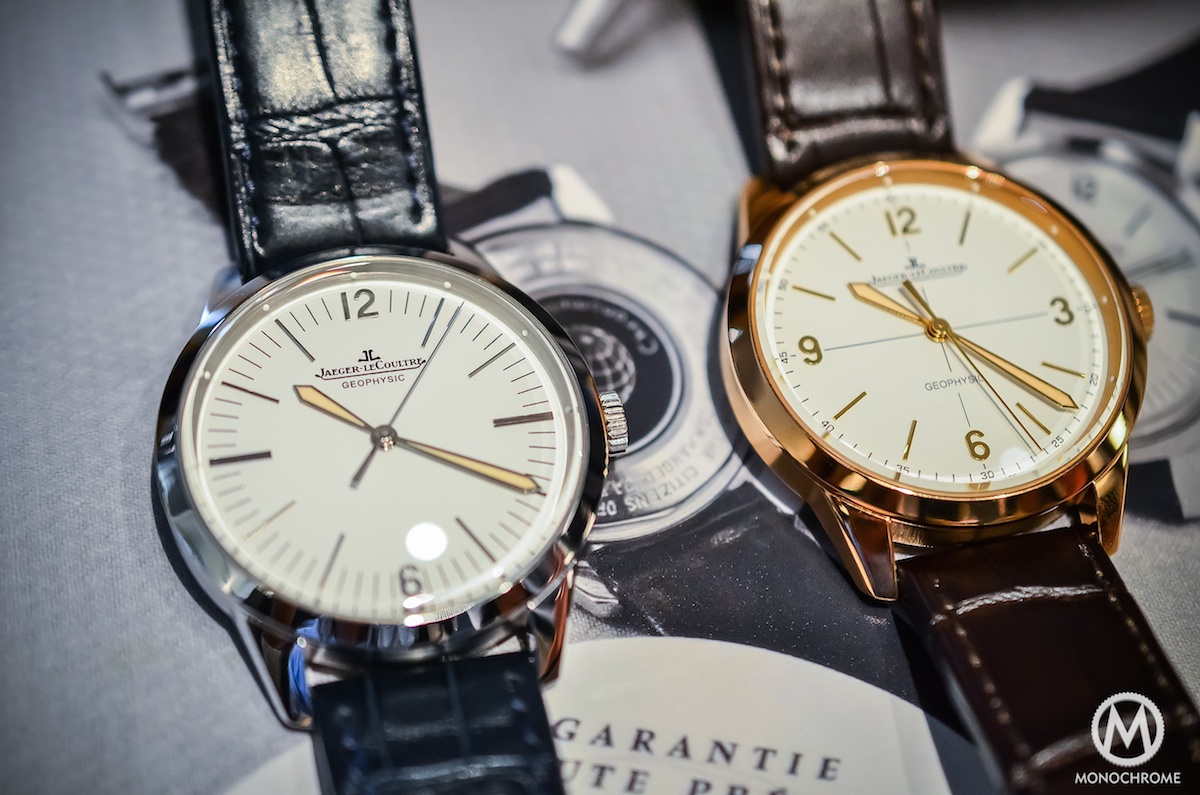
The history of the manufacture Jaeger-LeCoultre is long and rich. The first model you might think about when looking at vintage collections will certainly be the Reverso. It is clearly the most long-lasting and deepest collection. But that would highly reductive considering all the other interesting watches that JLC had created. One had been under the scope of the brand for a few years and is now proudly reissued: the Jaeger-LeCoultre Geophysic, an appearing simple watch that was, back in 1958, representing the best of the brand. Here are the 2014 editions.
The Original Jaeger-LeCoultre Geophysic
The year 1958 was rich, not only for Jaeger-LeCoultre but mainly for science, as it was the world’s first “International Geophysical Year.” This research program was supported by 67 nations, both from West and East camps, in an era of tensions, during the Cold War. Rockets were launched to study the atmosphere, seabeds were examined. The field of researches were huge: seismology, electromagnetism, glaciology, radioactivity or solar activity.
One fact sets apart the rest of the other achievements. August 1st, 1958, the USS Nautilus (the world’s first operational nuclear-powered submarine) in a total secret, became the first watercraft to reach the geographic North Pole. In order to compliment this accomplishment, some citizens of Geneva gifted the captains of the Nautilus with watches, two Jaeger-LeCoultre Geophysics to be precise.
The Geophysic was only produced during a year (before being replaced by the Geomatic) in a very limited edition. I was actually two watches, one with a 6 and a 12 on the dial and long indexes (the most common) and another with 3-6-9-12 indexes and a cross in the middle of its dial (the rarest edition). This 35mm apparently-simple watch was concentrated all the ‘know-how‘ of the manufacture.
Inside was ticking the famous calibre 478BWSbr, a manual winding movement with the best features available at that time: a hacking-second mechanism, a Glucydur balance wheel, a fine adjustment cock, a parachoc system and an adjustment to 5 positions and temperatures. The 1958 Geophysic was also able to resist to a 600 gauss magnetic field, thanks to a soft iron cage and chronometer certified.
It’s now one the most sought-after and collectible chronometer watches, with a highly modern design (for that time of course) that Jaeger-LeCoultre proudly and faithfully re-issues this year.
The 2014 Jaeger-LeCoultre Geophysic – Common Features

Don’t refresh the page and rub your eyes, you are now looking at the 2014 editions of the Jaeger-LeCoultre Geophysic. We told you this was a faithful re-edtiion. At first glance and with only a quick look at them, it is difficult to identify the differences. However, even if sharing the exact same appearance, the 2014 editions are technically different and the whole partition is clearly modern.
Aesthetically speaking, JLC had the very good idea to keep this both sporty and dressed feeling, due to an elegantly shaped case. The polished finish (on the top only since the sides are brushed, like the original) emphasizes the angular design of the bezel and the lugs. The size has been updated to modern standards. Don’t be afraid though as the diameter remains fortunately reasonable at 38.5mm. This vintage inspired watch is water resistant to 100m and brings back the soft iron cage to protect the movement from magnetic fields. It remains however quite thin, with 11.4mm in height.

Inside, no more manually wounded movement. The glamorous curves of the 478 movement are replaced by a very modern automatic calibre. This is a deliberate choice from Jaeger-LeCoultre. The 1958 editions was representing the very best of the manufacture at that time, and the 2014 should have that same spirit. The Jaeger-LeCoultre Geophysic re-issue comes with the calibre Jaeger-LeCoultre 898/1, a self-winding movement with a modern frequency of 4Hz (28.800bph), a stop-second mechanism, a balance with micro-screws to allow a fine regulation, Spyr gears for smooth torque transition in the gear train and ceramic ball bearings in the self-winding mechanism with no need of lubrication. It remains a classical hours-minutes-seconds movement, but with its own internal chronometer certification, the 1000-hour test.
When the COSC certification only focuses on the movement, the 1000-hour testing procedure works on the whole watch, during 6 weeks and in 6 positions. Watches are regulated to -1 / +4 seconds per days (more precise than the COSC, with a precision of -4 to +6 seconds per days). This is for sure a pretty interesting in-house movement. On an historical basis, we would have prefer a manually wound engine, more faithful to the original – that also has this sort of obsolete charm – but, for a daily use, the automatic movement will be more practical. And JLC had the good idea not to feature a date aperture on the dial.
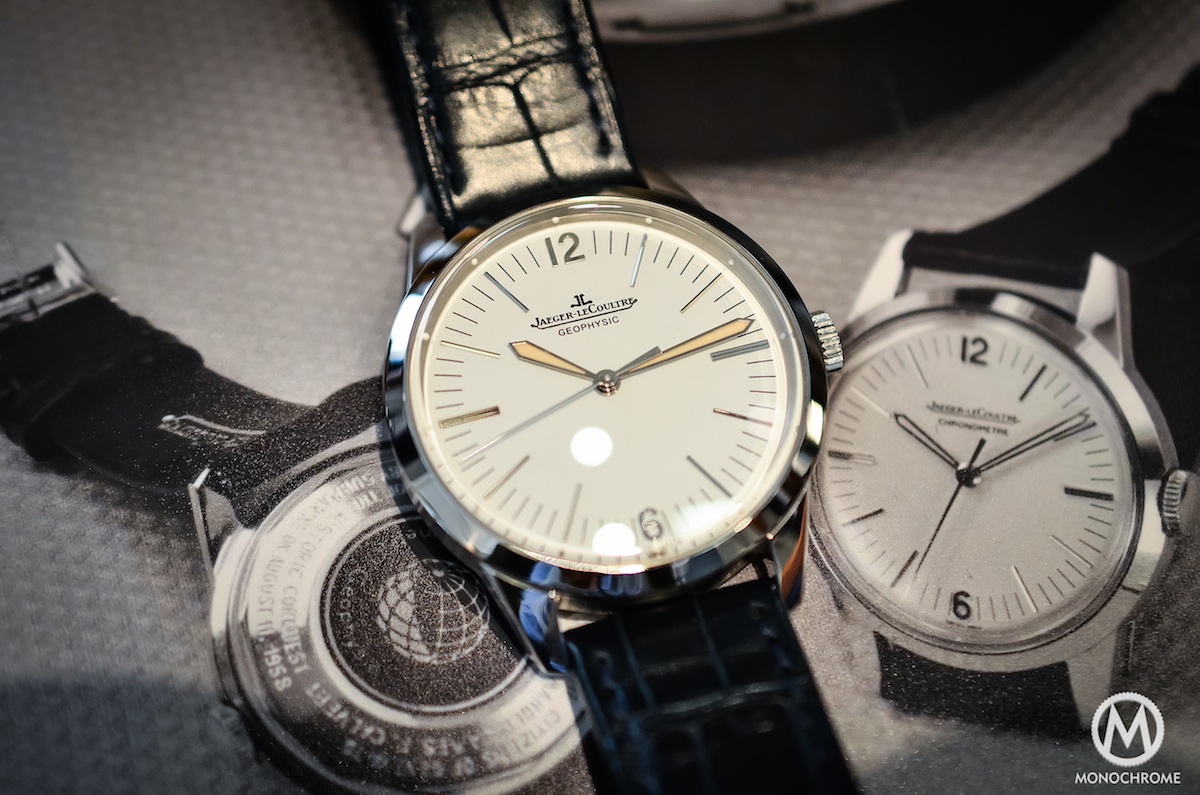
The Jaeger-LeCoultre Geophysic 1958 comes in three limited editions: 2 with the 3-6-9-12 indexes and the cross-hair dial, in stainless steel (800 pieces, 7.600Eur) or in 18k pink gold (300 pieces, 16.600Eur). Another edition shows the 6-12 indexes on the dial and is only available in platinum (58 pieces, 25.700Eur). Be sure to be within the firsts to order it (launch will start in October 2014) as it will be, without a doubt, a future collector.
The Steel and Pink Gold Jaeger-LeCoultre Geophysic
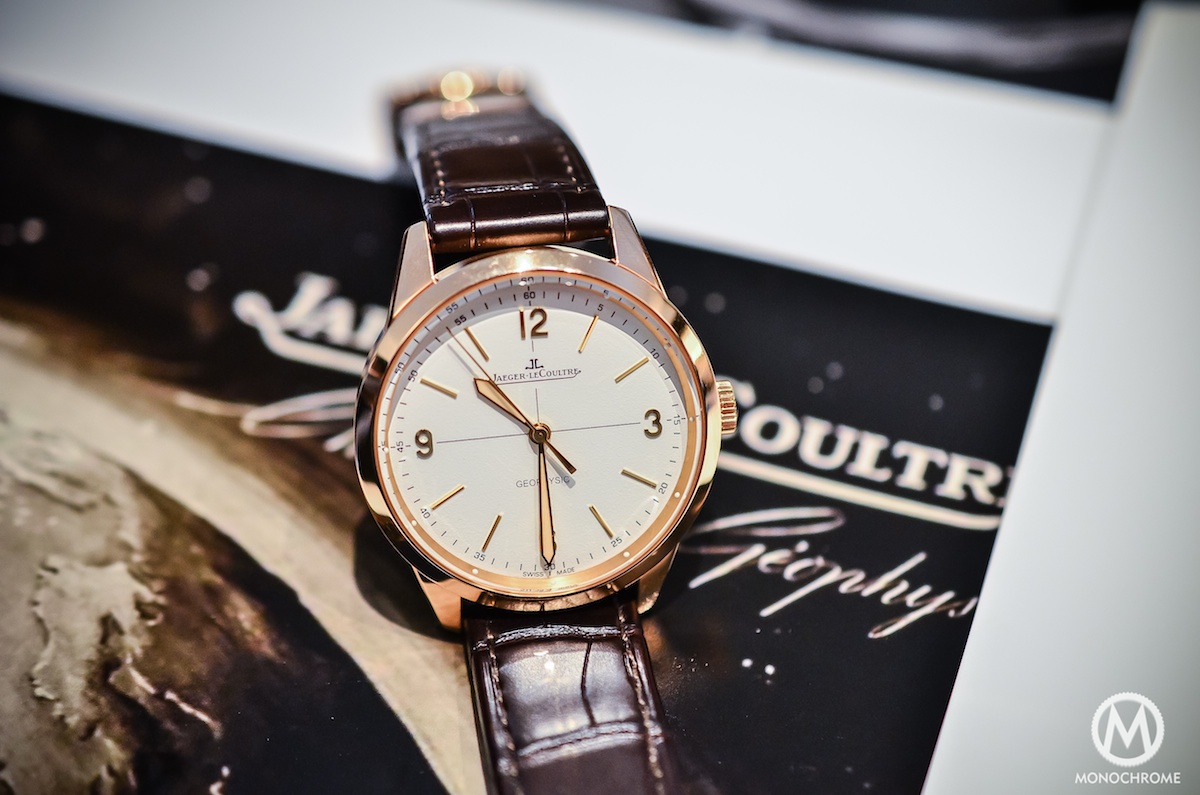
The Stainless Steel and 18k pink gold editions of the Jaeger-LeCoultre Geaphysic share the exact same design and only differentiate from their materials. The attention paid by JLC to the dial’s details and the historical faith is impressive. It might be quite hard to see the differences between a vintage and a modern edition without a trained eye (except with both of them next to each other.)
The base of the dial is a slightly grained white plate, with applied indexes. It shows both simple batons and 3-6-9-12 indexes for the hours. The text on the dial is limited to the name of the brand and the name of the model. These two editions also feature a cross-hair in the middle of the face. Surprisingly, Jaeger-LeCoultre chose to use this design for the steel and the pink gold versions, the less limited editions of the modern ones. The cross-hair 3-6-9-12 layout is indeed the rarest of the vintage Geophysic. However, this design is maybe less iconic than the other one, available in the platinum edition.
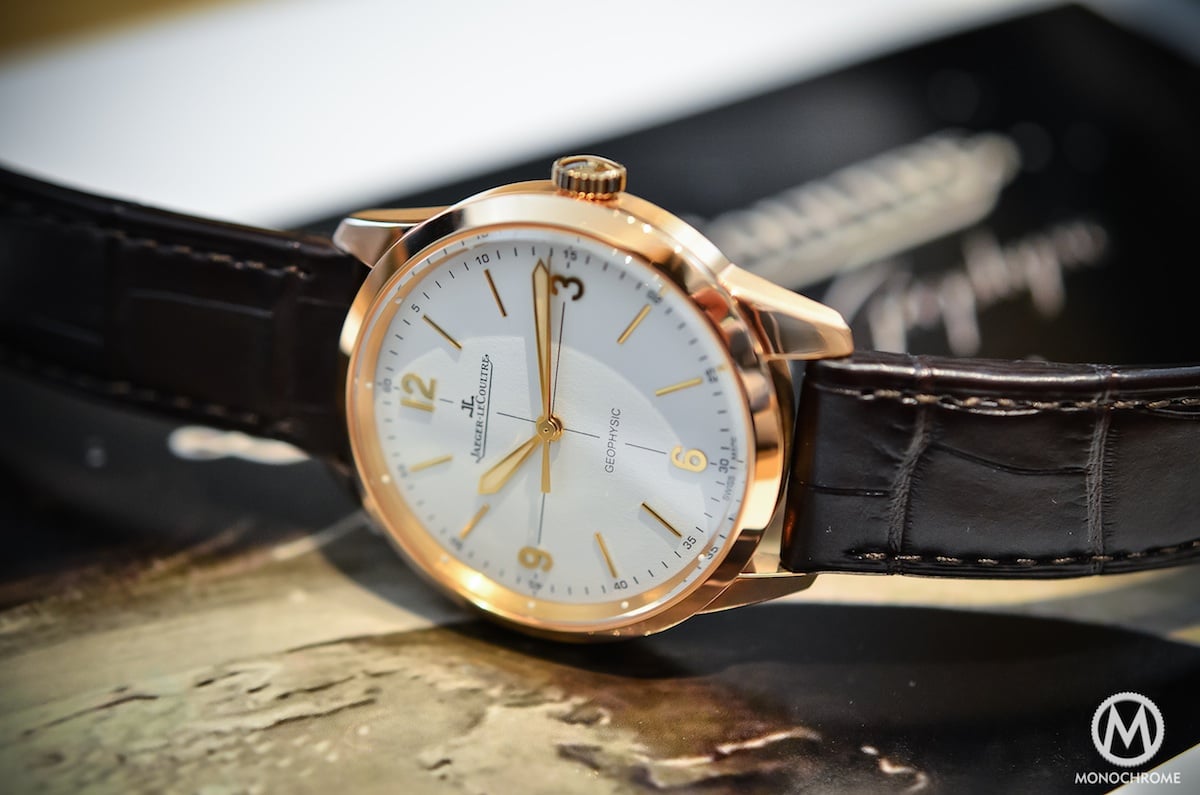
Another cool detail reissued on the 2014 edition are the lume plots that are not applied on the dial. Into the vintage geophysics, they were attached to the inner side of the crystal. Not the most practical feature. Thus, JLC chose to use something close in the modern editions, as the lume dots are attached to the inner bezel and not to the dial. The hands are also loyal to the historical edition, with a glaive-shape and a faux-patina luminous paint.
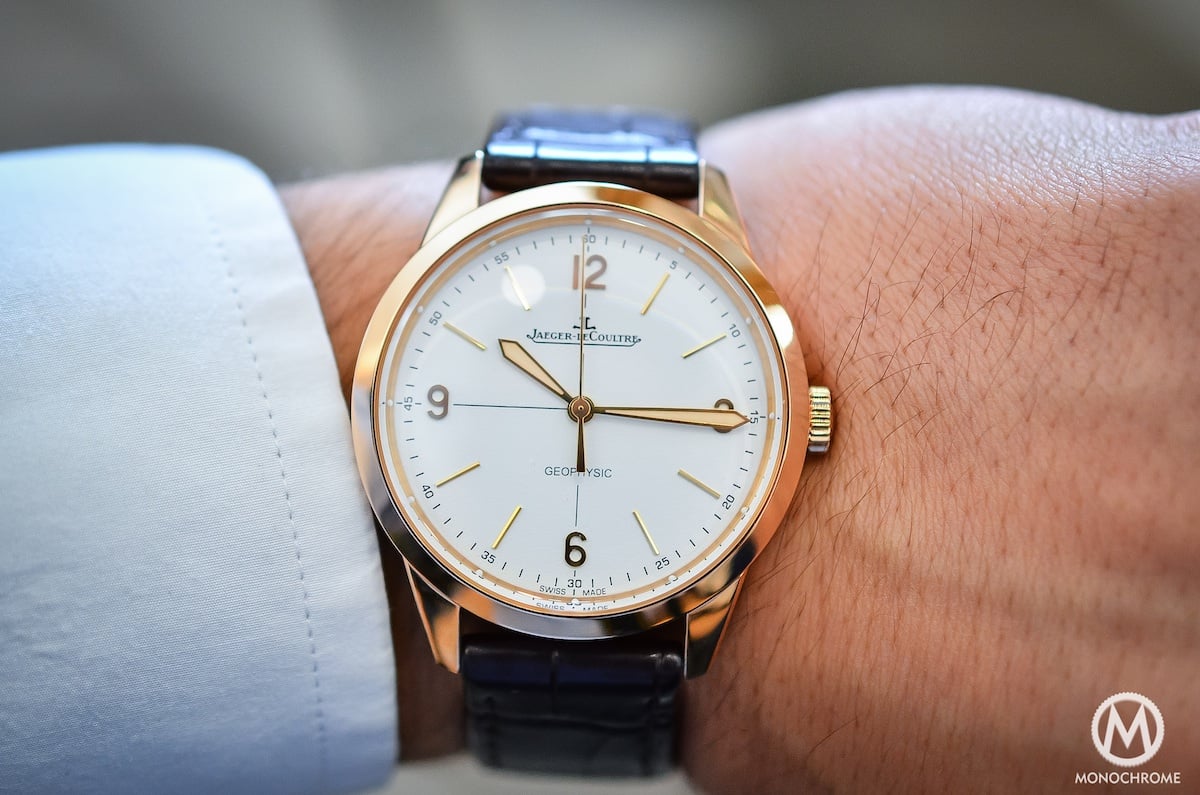
On the wrist, the Jaeger-LeCoulre Geophysic looks superb. The size is reasonable enough to be worn with a dressed suit. It is however with a casual sporty outfit that the Geophysic will be more suitable, showing its great presence on the wrist (more than you can expect from a 38.5mm case) and its vintage inspired look. The pink gold case adds an extra warm atmosphere to the package and, of course, some additional exclusivity.
The Platinum Jaeger-LeCoultre Geophysic

For this 58-piece only edition in platinum, JLC chose to use the second and more iconic design of the vintage Geophysic. This may not be the rarest of the editions but it is the one that collectors know best. It has the same hands than the stainless steel and pink gold versions but the dial is different. It shows only two applied numerals (the 6 and the 12) and no cross-hair. Instead, the minute markers are longer.
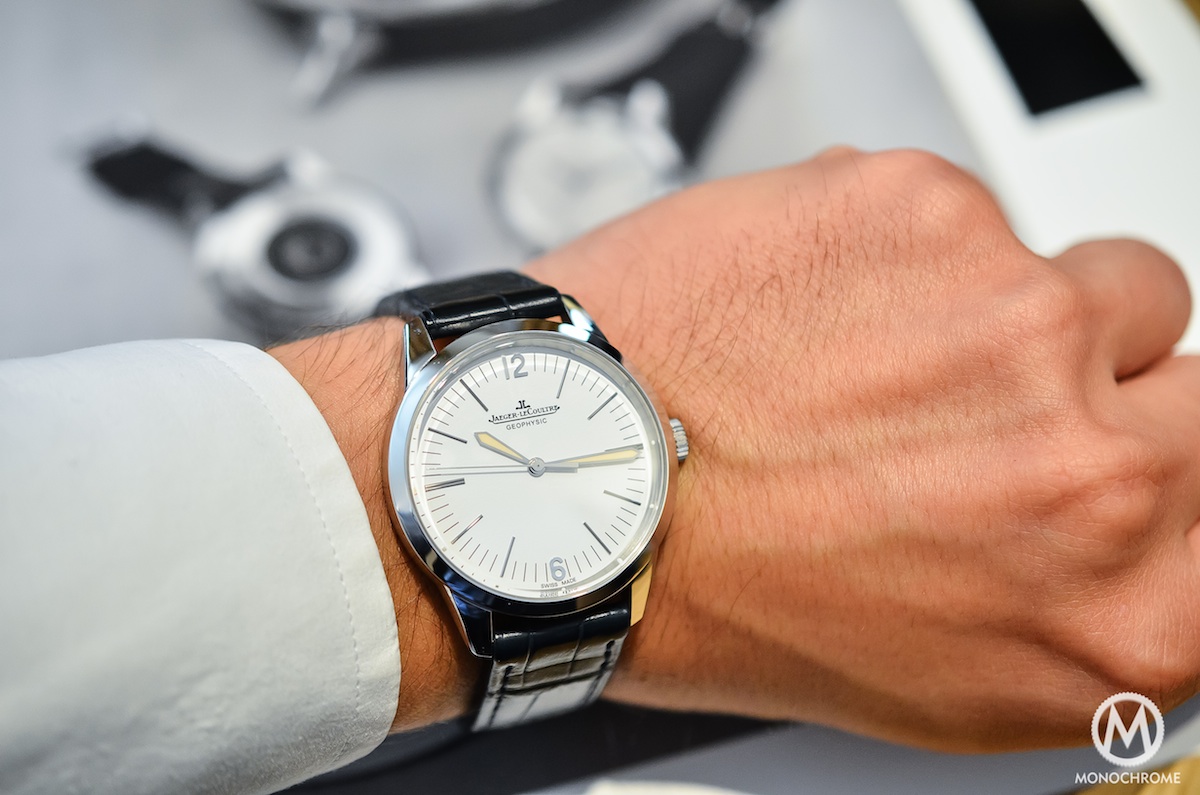
Apart from the material used and the design of the dial, the platinum edition is the exact same watch. Meaning that it is very comfortable on the wrist and that it also brings a sporty vintage feeling. The platinum edition may certainly be a bit more dressier and classical, when the stainless steel and pink gold editions look surprisingly modern.
Still, the Jaeger-LeCoultre is a very subtle watch that pays a nice tribute to an iconic model of JLC’s rich history.
Specifications:
- Movement: Self winding, Calibre Jaeger-LeCoultre 898/1. 43 hours of power reserve. 202 pieces. 29 rubies. 4Hz or 28.800bph. 3.3Omm height
- Functions: Hours, minutes, seconds
- Dial Steel and gold: White grained base. “Geophysic” inscription at 6 and “Jaeger-LeCoultre” inscription at 12. Dial with 3-6-9-12 markers and indexes applied, rhodium plated (steel edition) or gold plated (gold edition)
- Dial Platinum: White grained base. “Geophysic” and “Jaeger-LeCoultre” inscriptions at 12. Dial with 6-12 markers and indexes applied, rhodium plated
- Hands: Glaive shaped with luminous material for the hours and minutes. Baton shaped for the seconds
- Case: Stainless steel or 18k pink gold or solid platinum. 38.5mm x 11.4mm. Soft iron inner case. Water resistant up to 100m
- Straps: black alligator (steel edition) chocolate alligator (pink gold edition) blue alligator (platinum edition)



